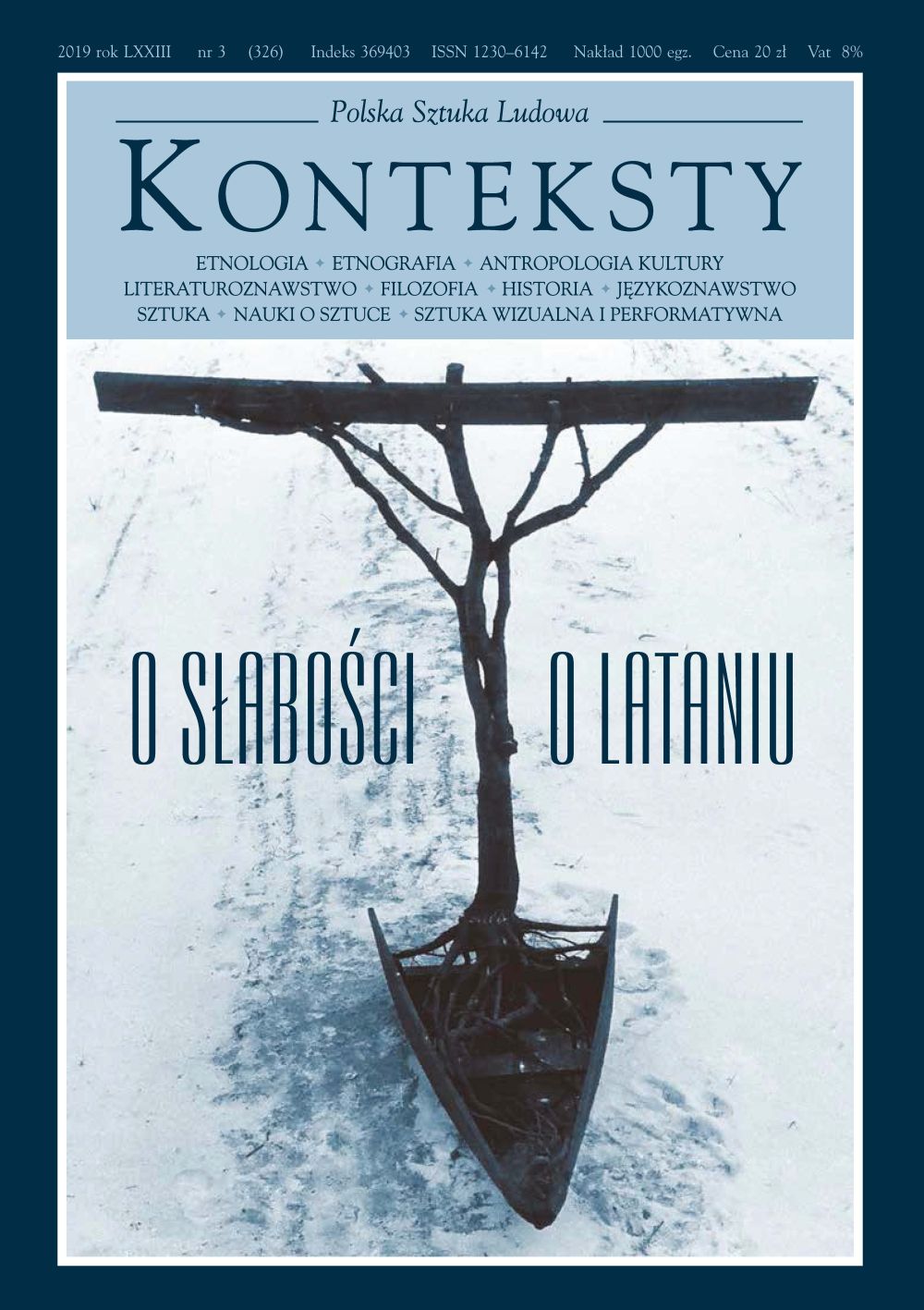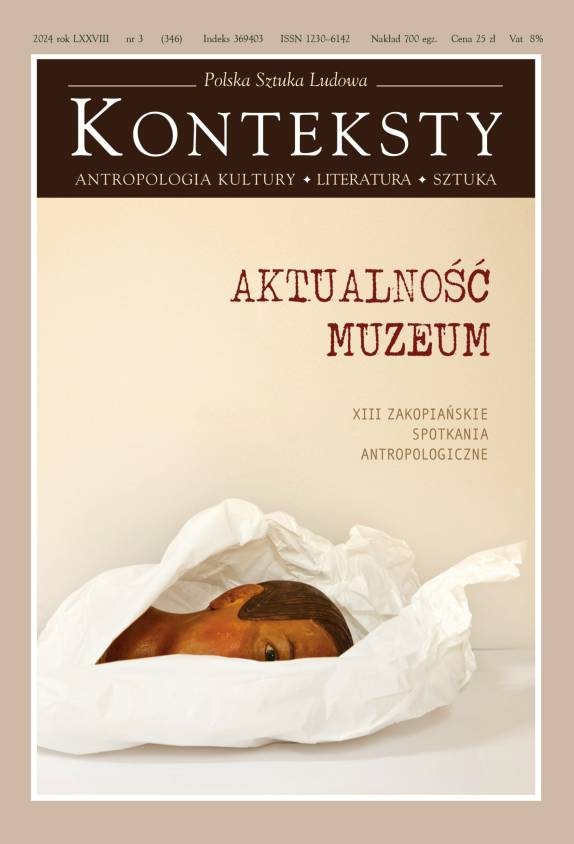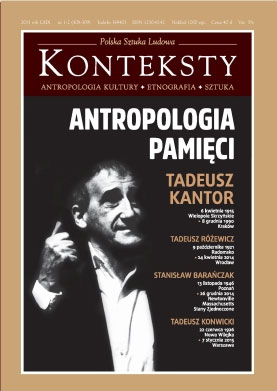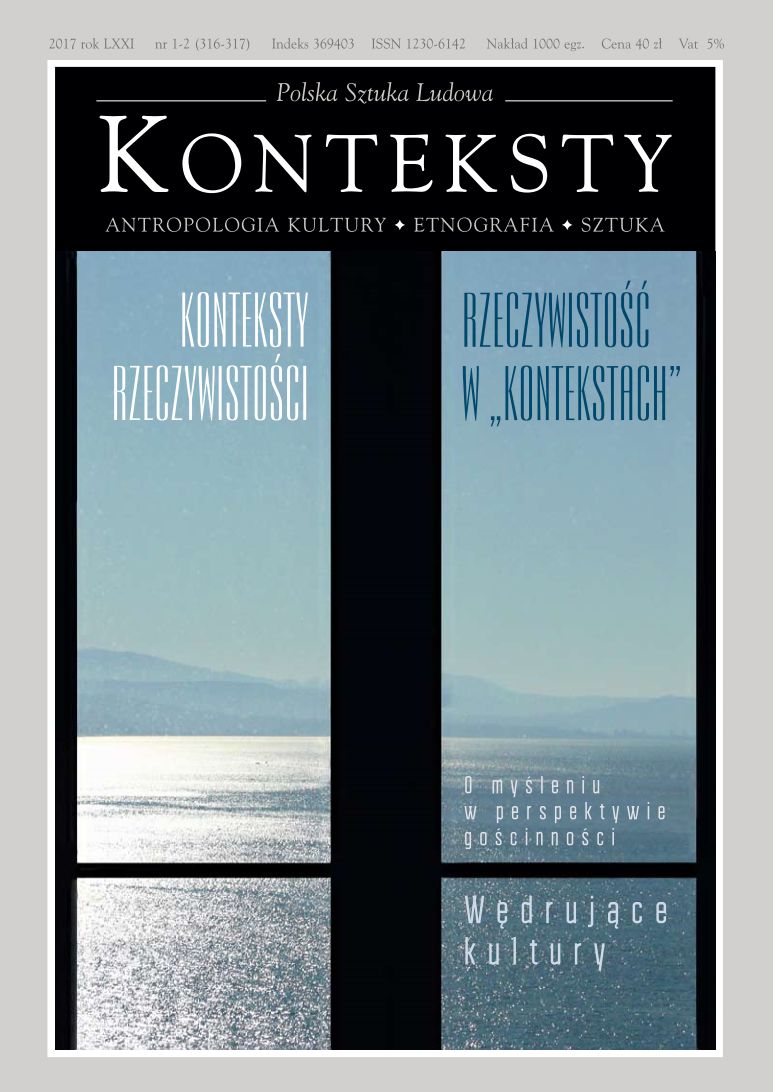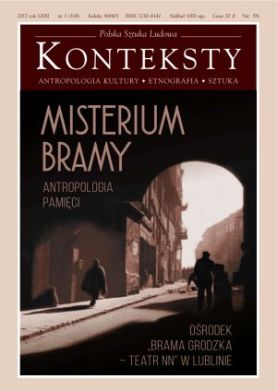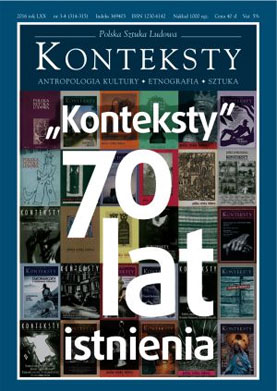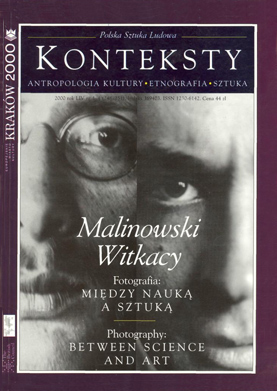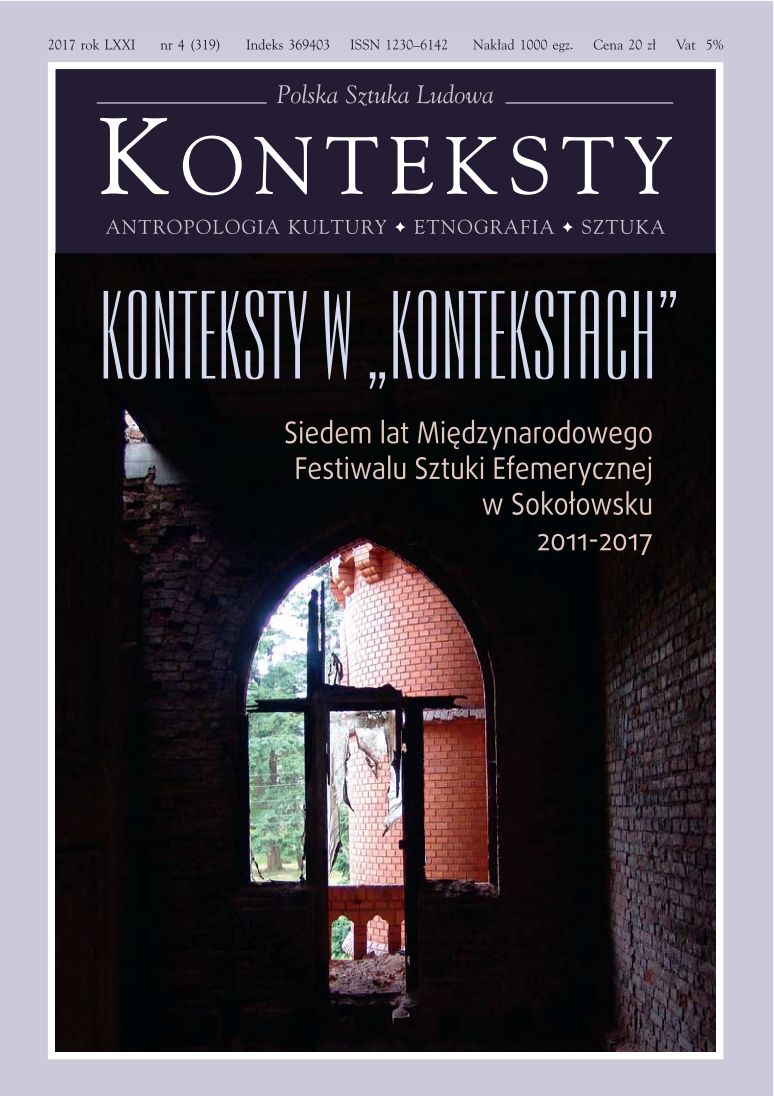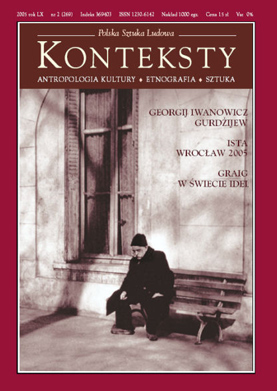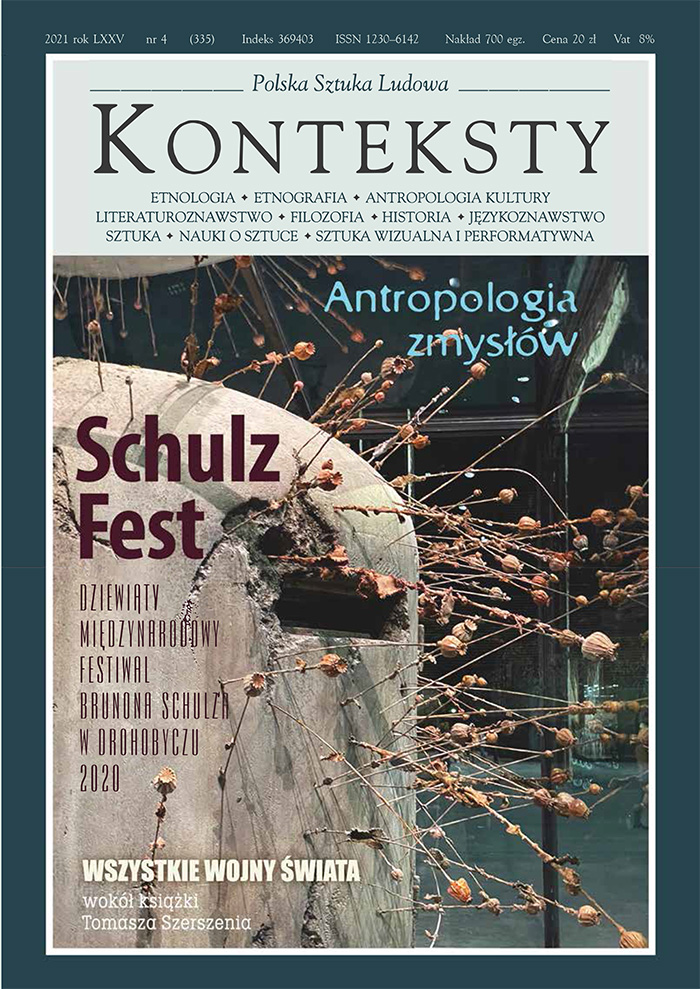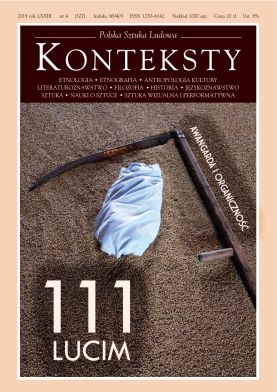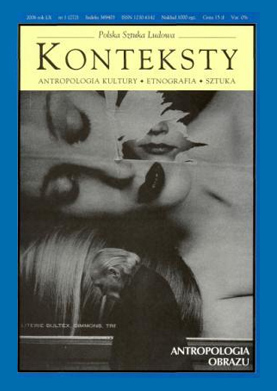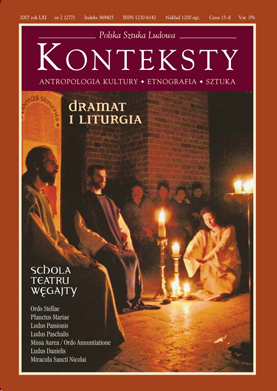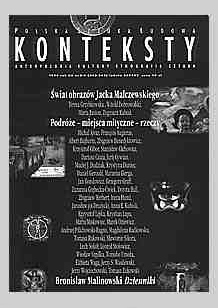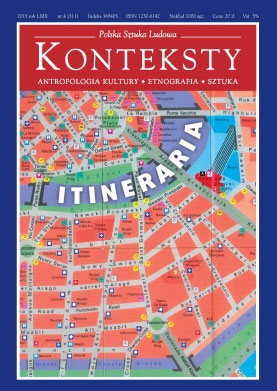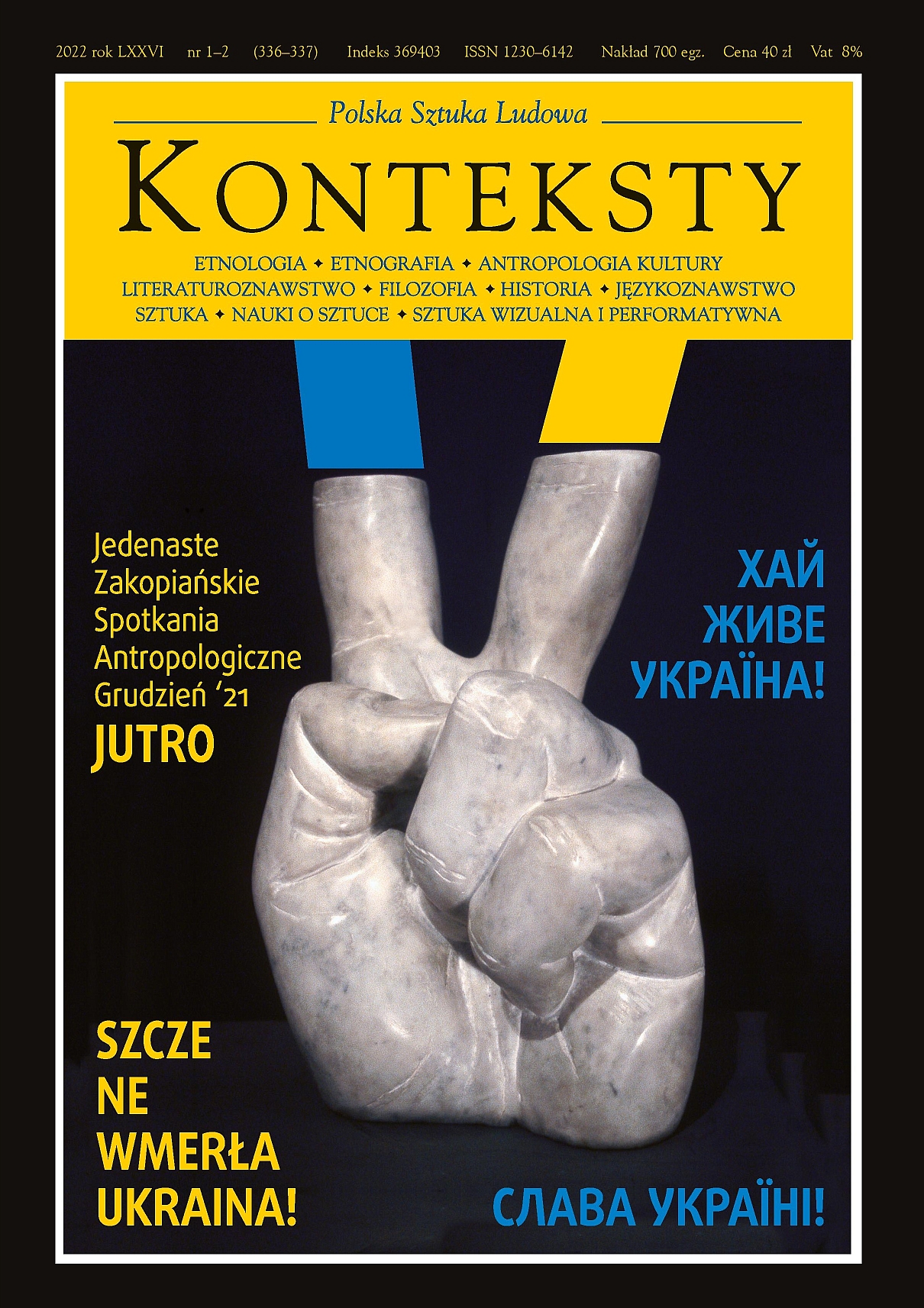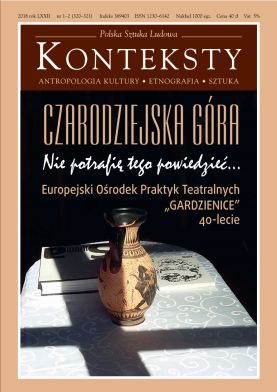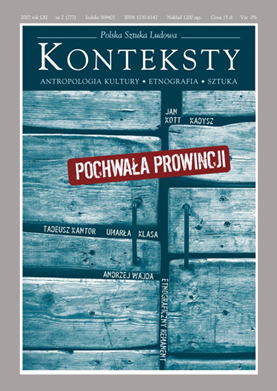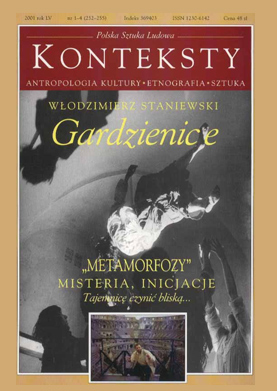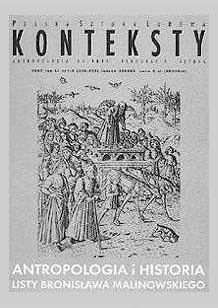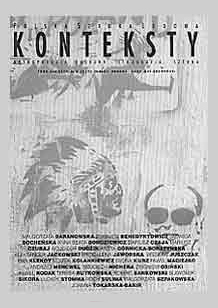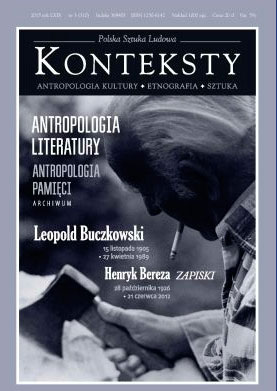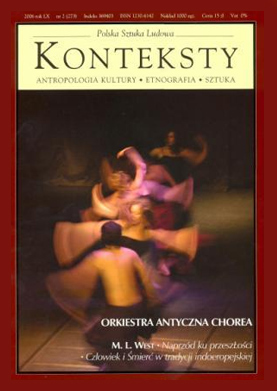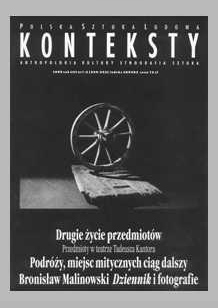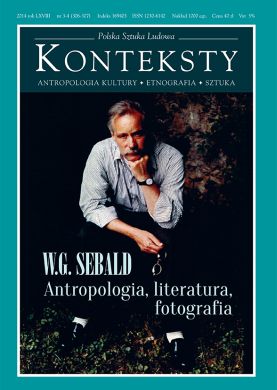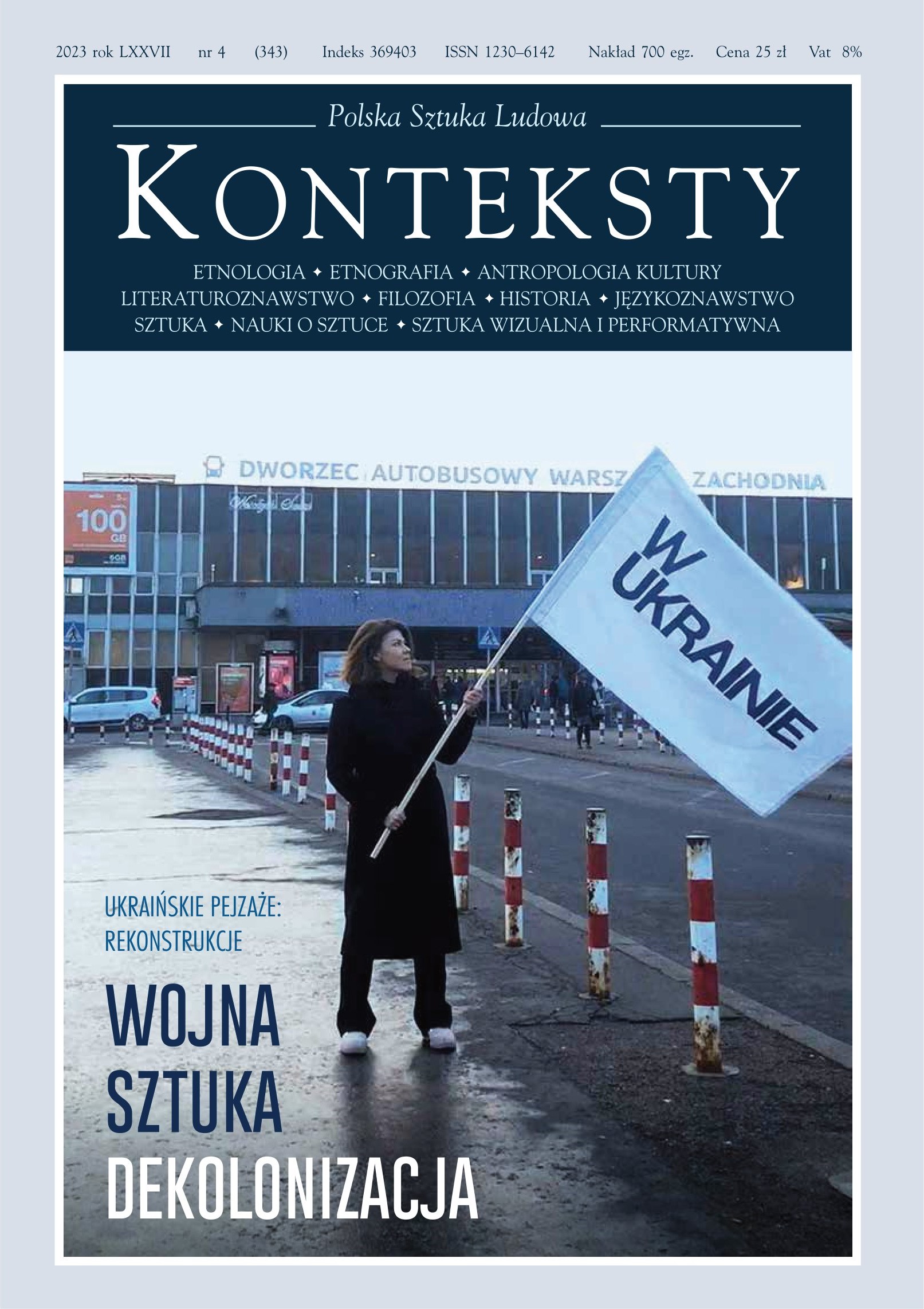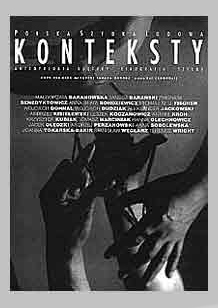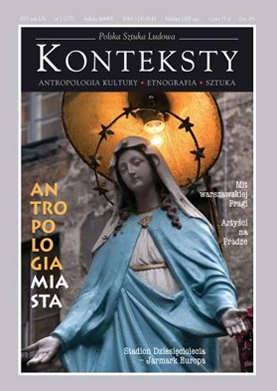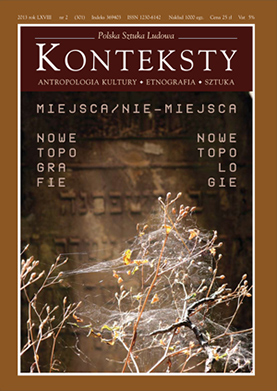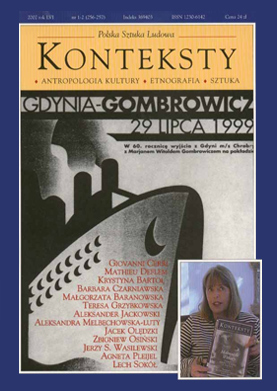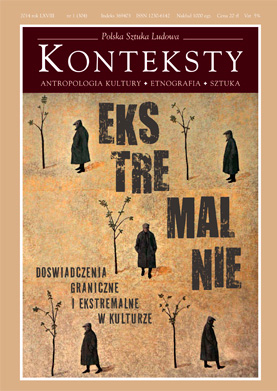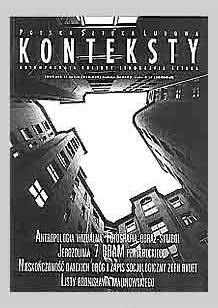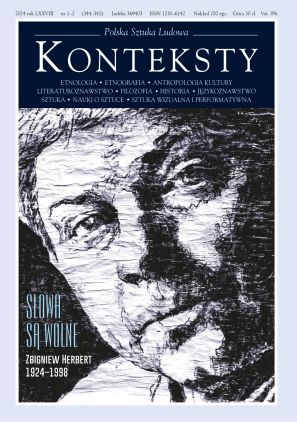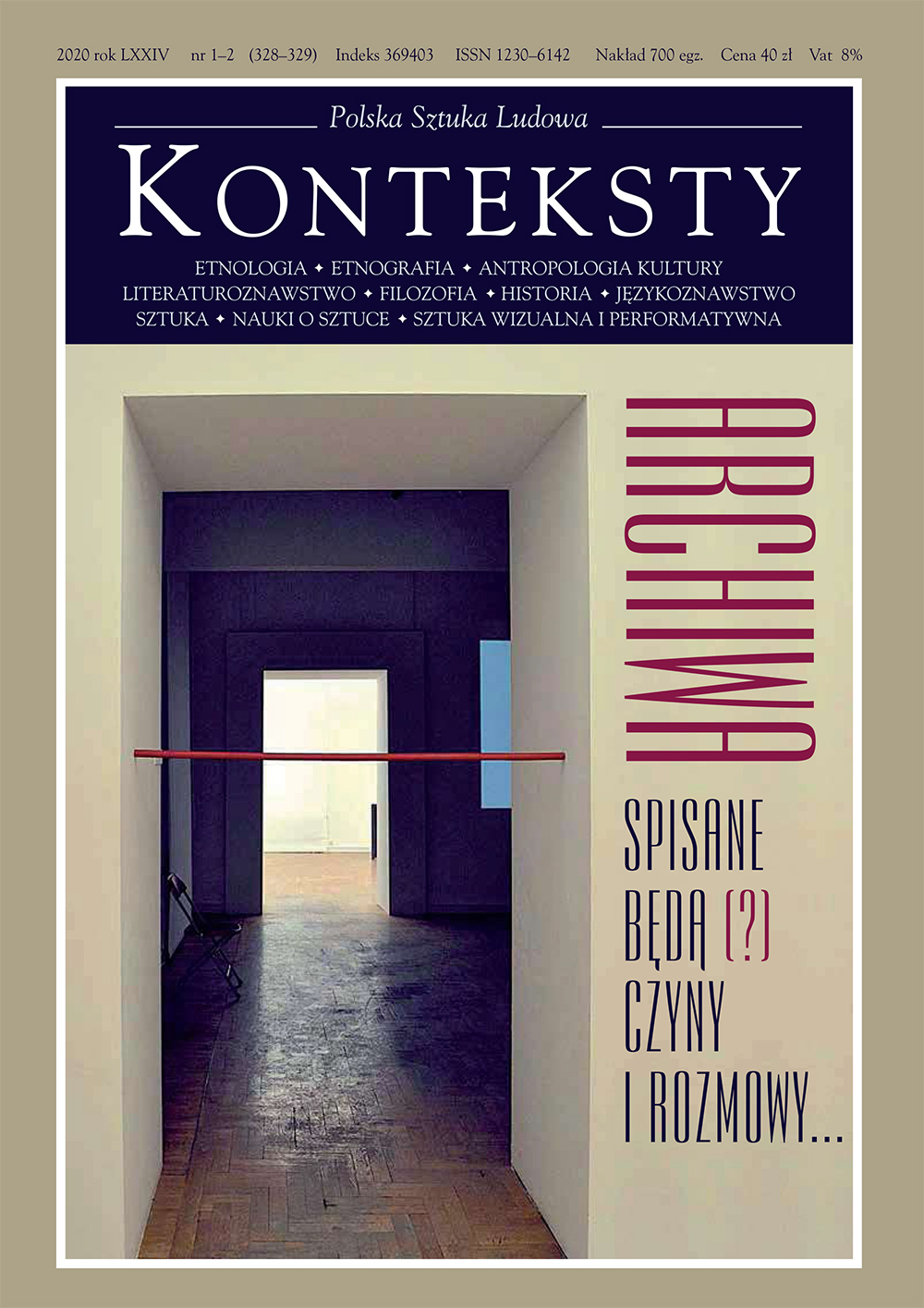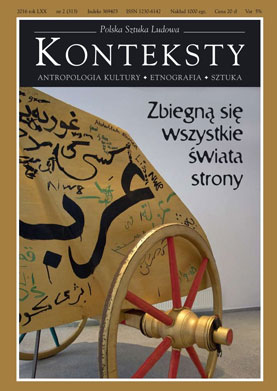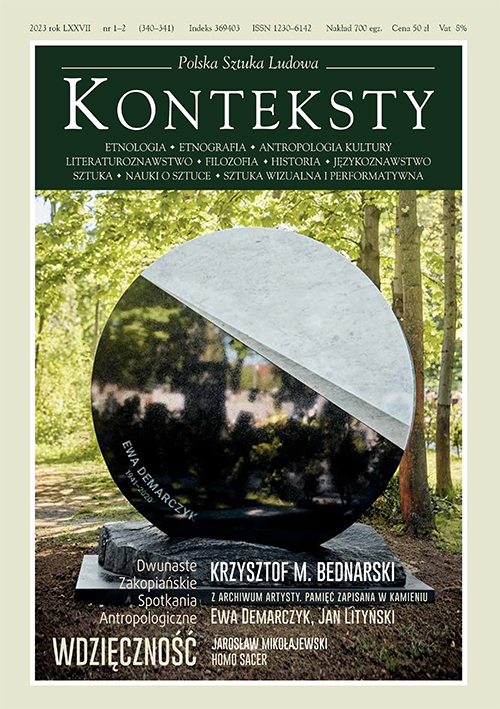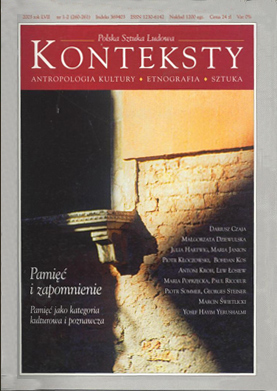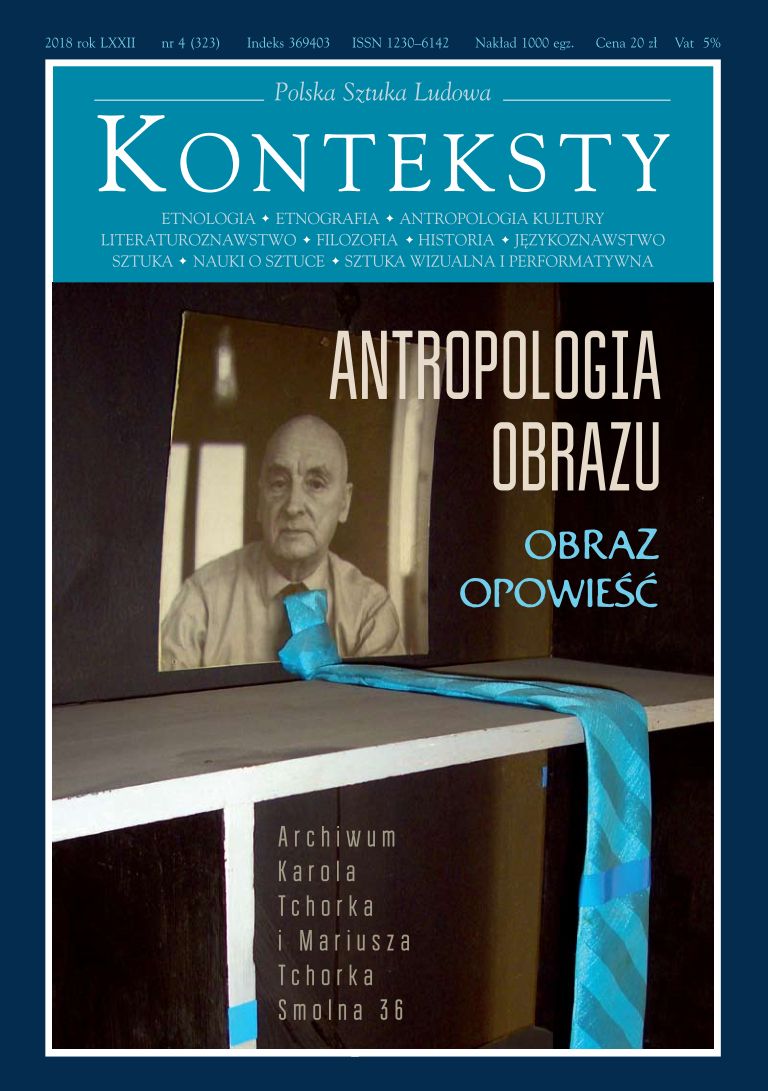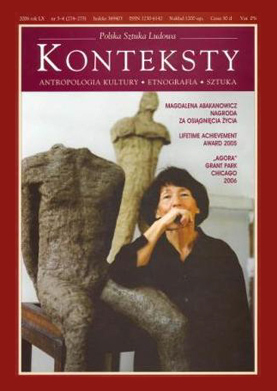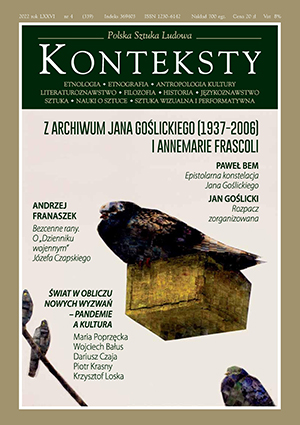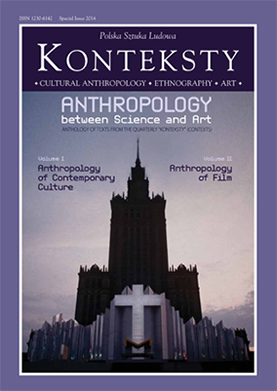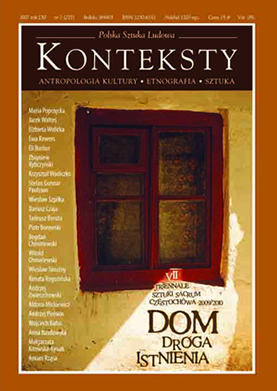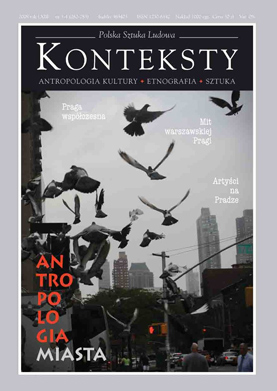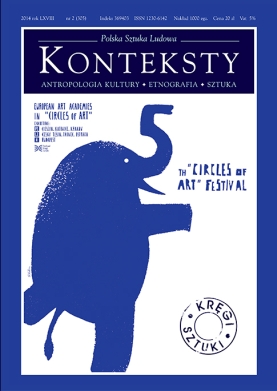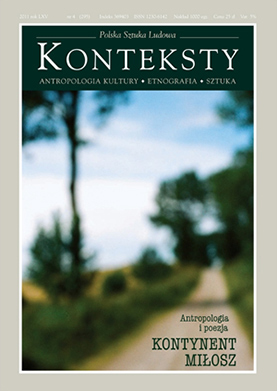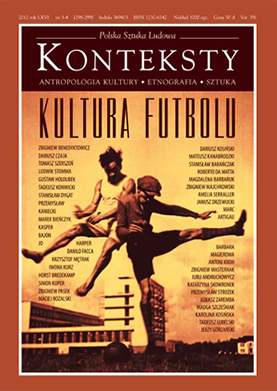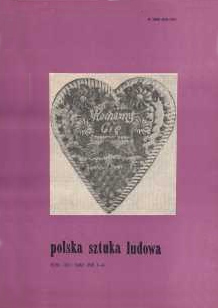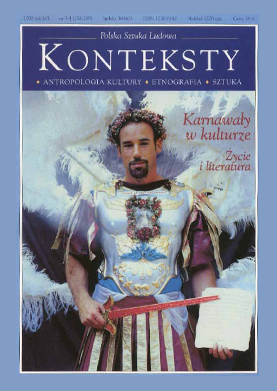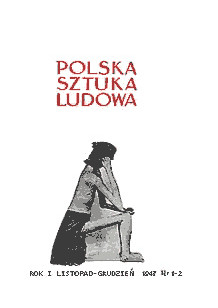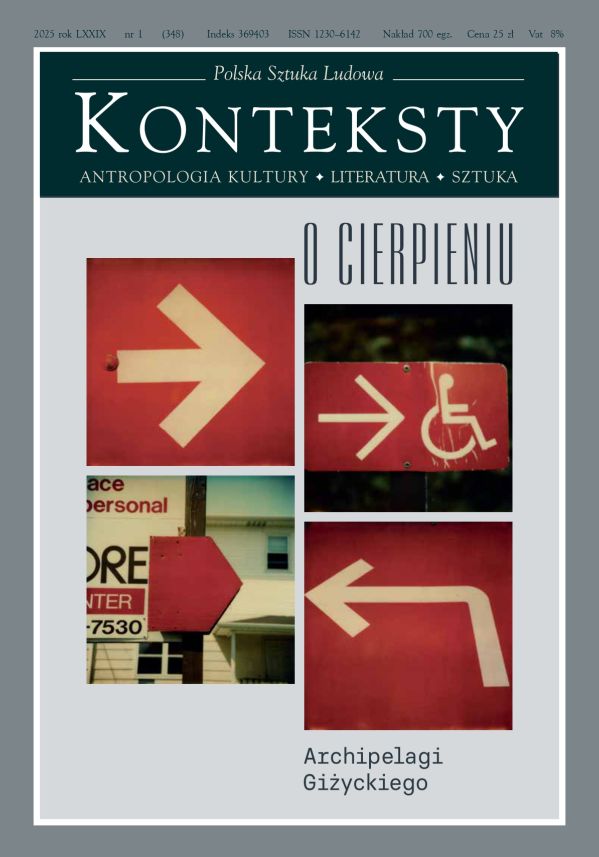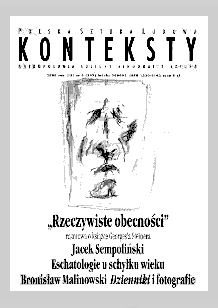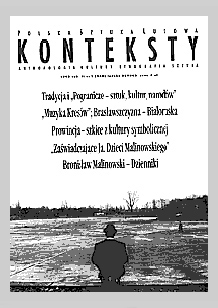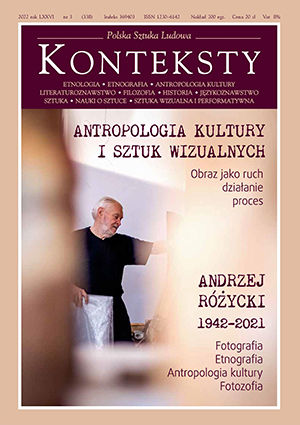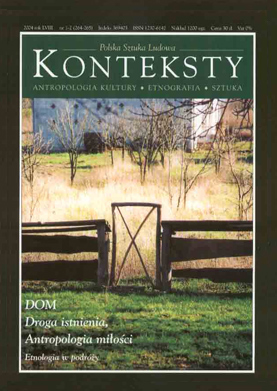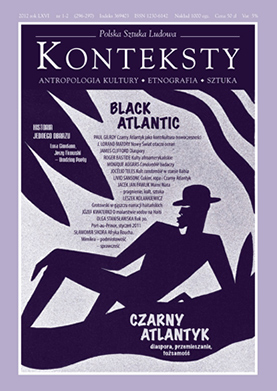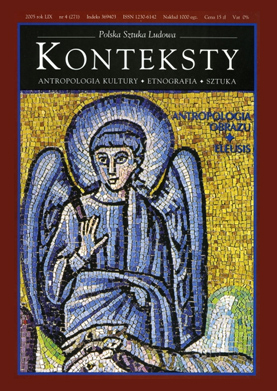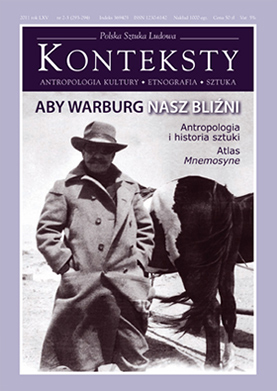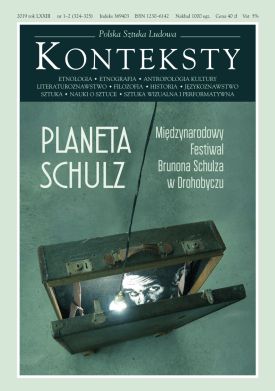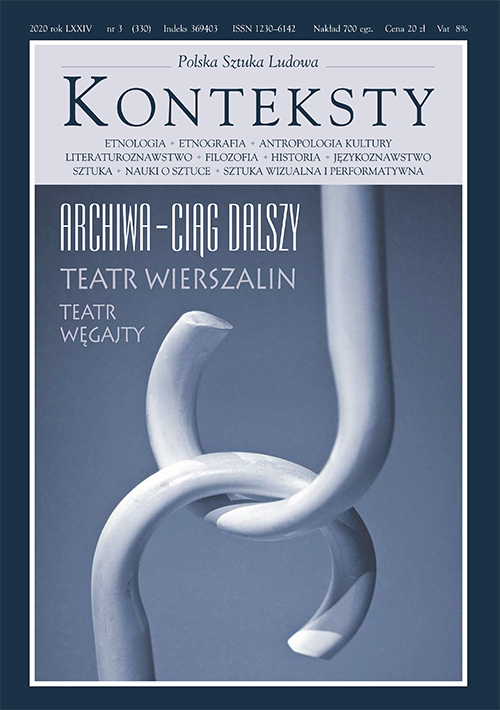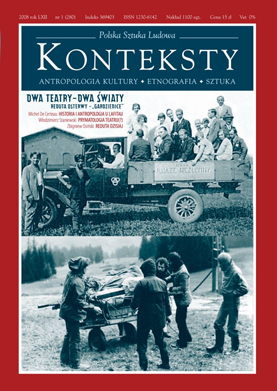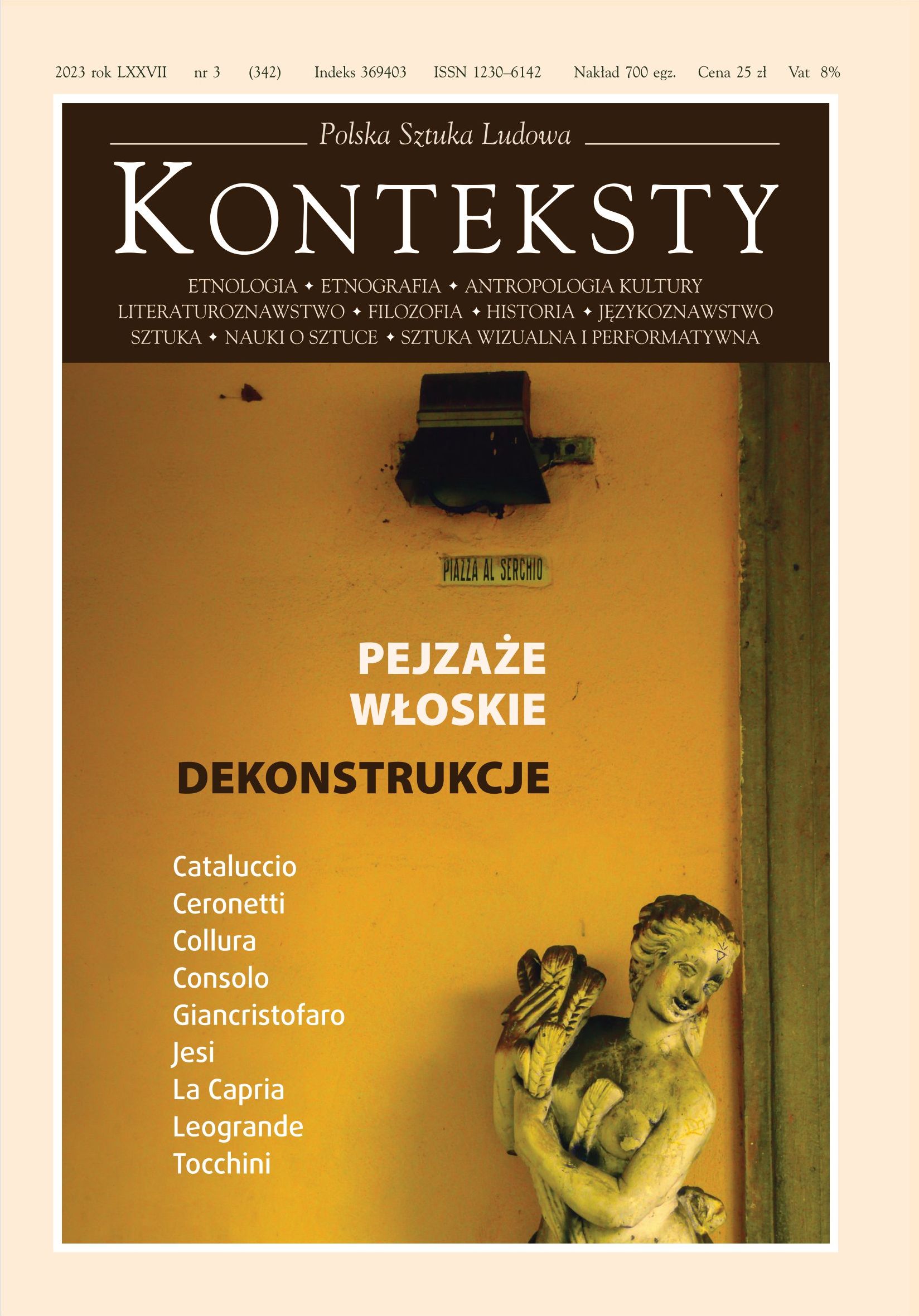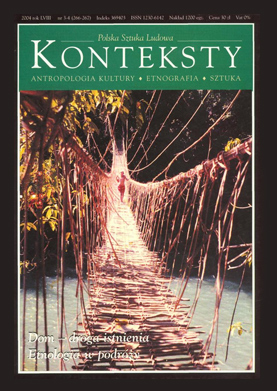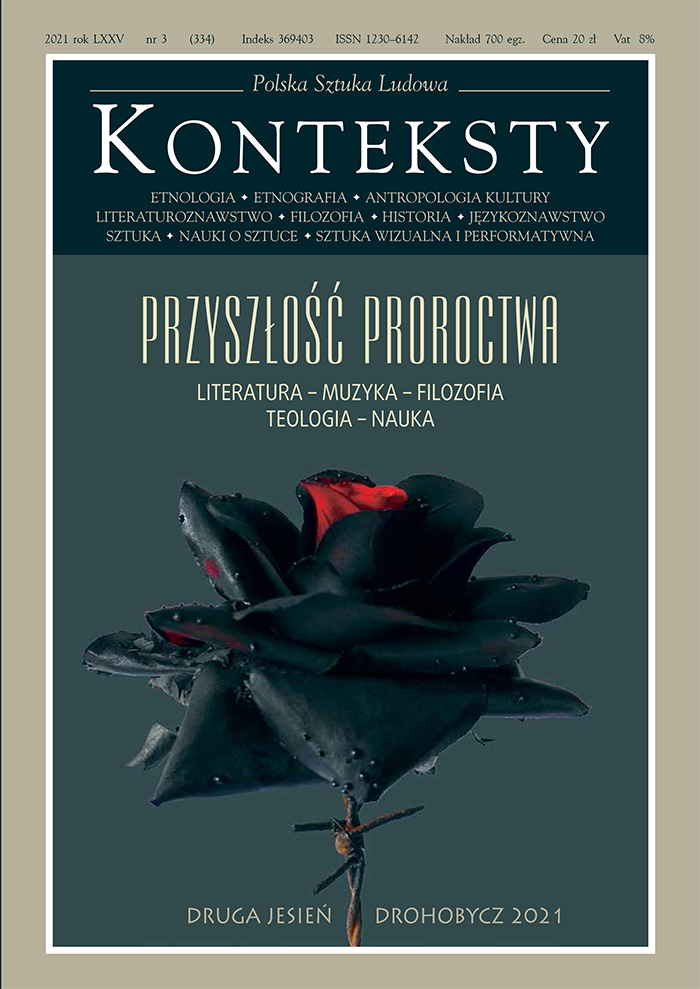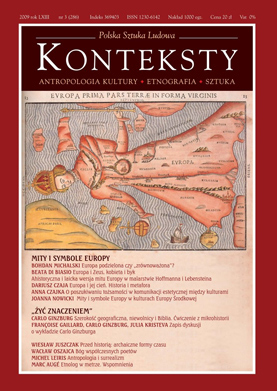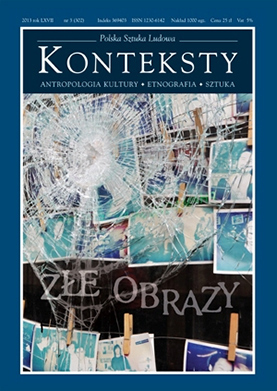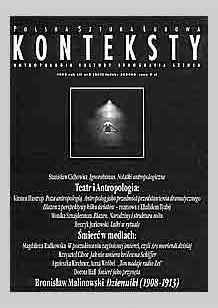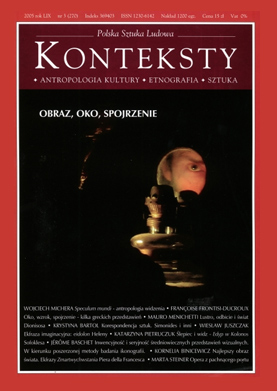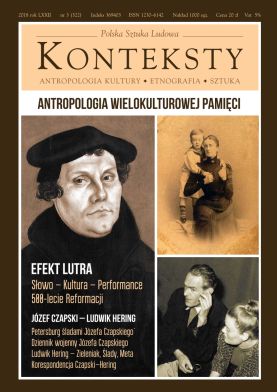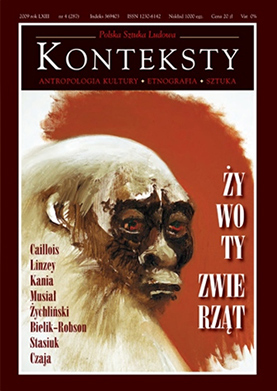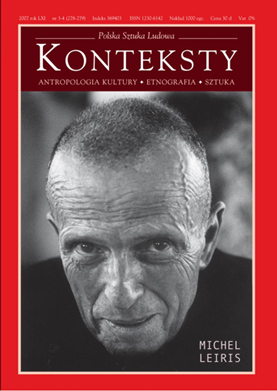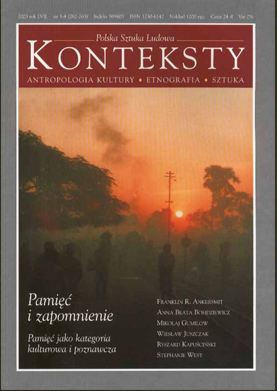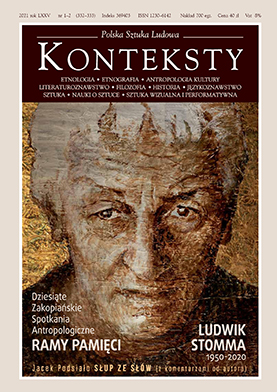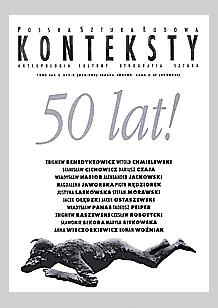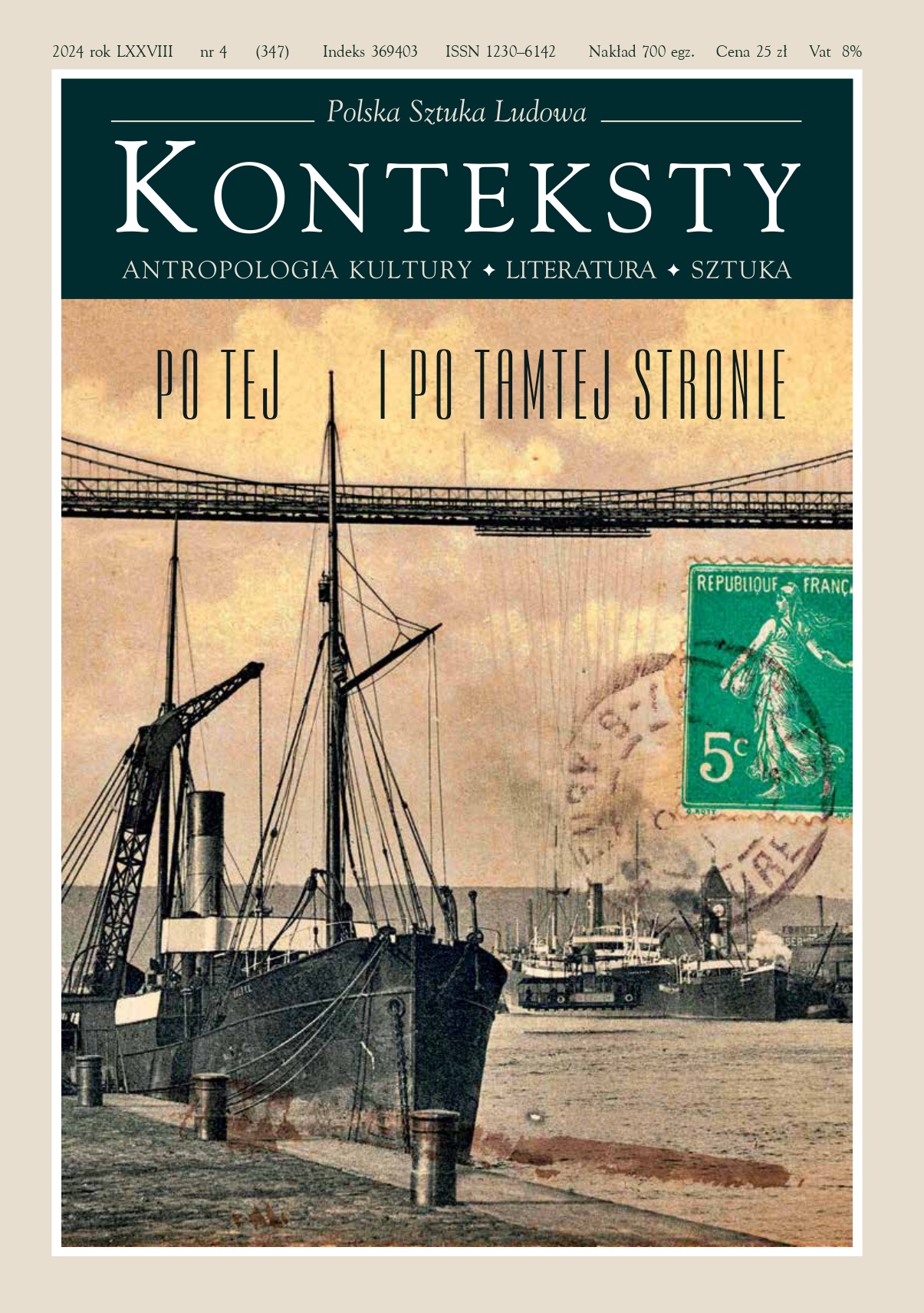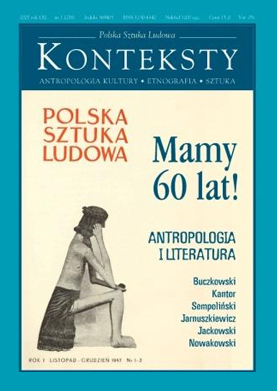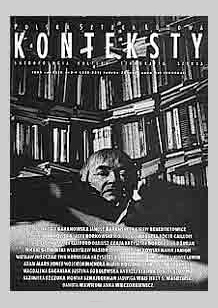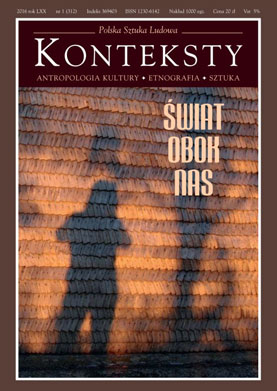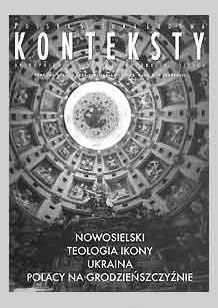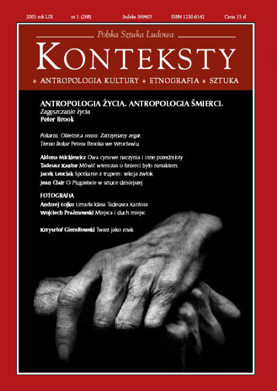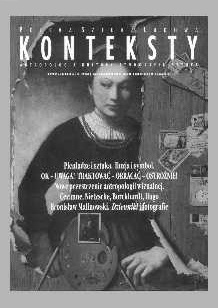Issue 2020/4 (331) - Latin America: Archives of Utopia, practices of resistance. Amereida
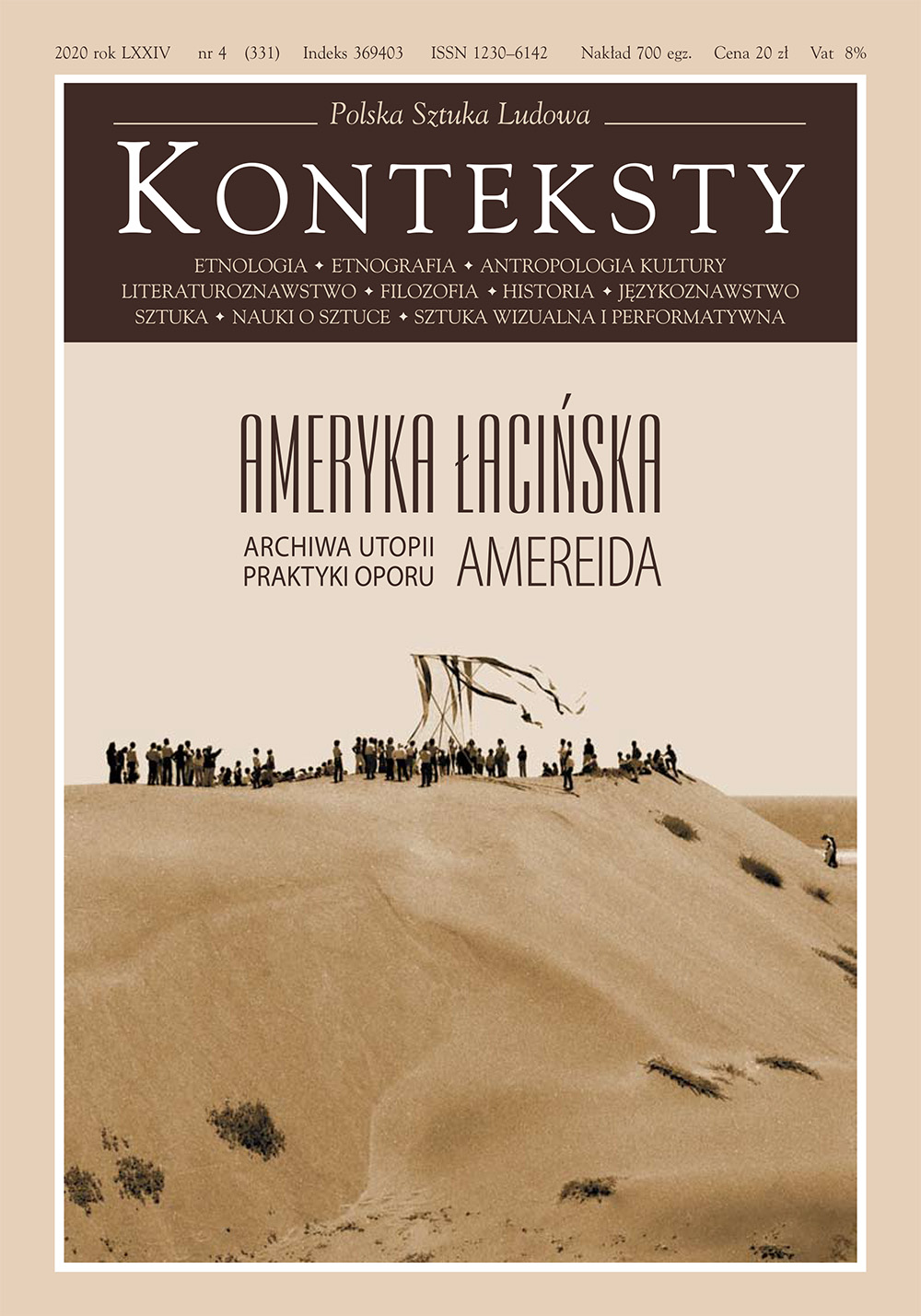
| Latin America: archives of utopia, practices of resistance | ||
| Tomasz Szerszeń | Opening Acts. The Invention of America  | 4 |
The essay opening the issue presents the contexture of modernity and coloniality, fundamental for decolonial thought, and associated concepts – “1492” (conceived as the beginning of “our history”), “invention” (and not “discovery”), and epistemic disobedience. The “invention of America” – similarly to successive philosophical, existential, political, and artistic gestures repeating it and performed in Latin America – could be understood as “opening acts” (Actos de apertura). From this vantage point the mythical founding act of America does not belong to history but is continually actualized anew by opening towards a perspective of utopia. In this sense, consecutive Latin American “opening acts” symbolically “establish America” upon each occasion: they comprise a transformation (albeit in an opposite direction) of the voyage of Christopher Columbus. It is also in this meaning, i.e. as epistemic courage, that the “learning from Latin America” formula – which could be the motto of the presented issue – can be comprehended. | ||
| Magdalena Barbaruk | Amereida: Archives of Departure  | 10 |
An introduction to the question of Amereida and the so-called Valparaíso School discussed in this issue of “Konteksty”. The Polish researcher dealing with Amereida presents the specific features of selected texts: translations of the most significant archival texts (the poem Amereida, the travel-log of the 1965 expedition – travesía de Amereida, a description of the establishment of the Open City) as well as contemporary works originating within this tradition (Manuel Sanfuentes), together with interviews conducted with the continuators of the Amereida conception (François Fédier, Victoria Jolly Mujica, Javier Correa, Sebastian de Larraechea). Barbaruk demonstrates the way in which the history of this utopian poetic-archival current was “rewritten” by the present-day socio-political situation in Chile and Latin America. | ||
| Decolonial turn. Epistemologies of the South | ||
| Walter Mignolo | Epistemic Disobedience and the Decolonial Option: A Manifesto  | 15 |
Decolonial thinking emerged at the very foundation of modernity/coloniality, as its counterpoint in the Americas: in Indigenous and Afro-Caribbean thinking. The decolonial epistemic shift is a consequence of the formation and founding of the colonial matrix of power, a point that Aníbal Quijano pioneered in an article summarizing the platform of the modernity/coloniality project. Waman Puma de Ayala is the first case of the decolonial turn in the viceroyalty of Peru (as seen in his work: New Chronicle and Good Government, sent to Phillip III in 1616); the second case being that of Otabbah Cugoano, an emancipated slave who published his Thoughts and Sentiments on the Evil of Slavery in London in 1787. Both works are decolonial political treatises that, thanks to the coloniality of knowledge, were unable to share the discussion with the likes of Machiavelli, Hobbes, and Locke. To re-inscribe them today in the genealogy of decolonial thinking is an urgent project. Waman Puma and Cugoano opened the way to border thinking by way of the experience and memory of Tawantinsuyu in the former, and the experience and memory of brutal African slavery of the Atlantic in the latter. | ||
| Santiago Castro-Gómez | What Is to Be Done with Western Universalisms? Thinking Through the Decolonial Turn  | 31 |
Santiago Castro-Gómez poses questions concerning relations and tension between the decolonial theory and universalism. In doing so he polemicizes with the view, frequent in Latin America, maintaining that the fundamental objective of the critical theory and the decolonisation of social sciences, art, and philosophy was to consist of a rejection of all claims to universality, since universalism is an ideology belonging to local European history, and its transference to other cultural domains results in a reproduction of the colonial gesture. On the contrary: according to Castro-Gómez the emancipation policy cannot do without a universalisation of interests. | ||
| Boaventura De Sousa Santos | Manifesto for Good Living / Buen Vivir  | 41 |
A presentation of the opening chapter of Boaventura de Sousa Santos’ Epistemologies of the South. Justice Against Epistemicide (2014): “The global South is not a geographical concept, even though the great majority of its populations live in countries of the Southern hemisphere. The South is rather a metaphor for the human suffering caused by capitalism and colonialism on the global level, as well as for the resistance to overcoming or minimising such suffering. It is, therefore, an anti-capitalist, anticolonialist, anti-patriarchal, and anti-imperialist South. It is a South that also exists in the geographic North (Europe and North America), in the form of excluded, silenced and marginalised populations”. Manifesto heralds an epistemic revolution calling for a new visibility of the peoples of the global South and a search for other non-European, non-colonial, and non-capitalist ways of life. | ||
| Anthropophagy | ||
| Oswald De Andrade | Cannibalist Manifesto  | 47 |
One of the most prominent texts of Brazilian Modernism, written by Oswald de Andrade, poet and co-founder of the local artistic avantgarde (Manifesto Antropófago, “Revista de Antropofagia”, May 1928). The rapacious anthropophagic metaphor becomes not only an act of establishing Brazilian art and a bold settling of accounts with the local past but also – together with all the good and bad consequences – a symbolic foundation act of Brazilian society. | ||
| Suely Rolnik | Zombie Anthropophagy  | 53 |
Brazilian experience with this type of politics of subjectivation over the past five centuries makes it clear that there is little reason to celebrate this condition: anthropophagy alone by no means ensures the vitality of society. It can be invested in different politics: from the affirmation of the most creative and ethical forces to the most servile flexibility, whose corollary is the most perverse instrumentalization of the other. In Brazil, one finds a variety of tendencies between these two poles, often more significantly weighted toward the perverse pole. Can the critical elaboration of the Brazilian anthropophagic experience contribute to problematizing contemporary subjectivity under the regime of finance capital? More specifically, can it contribute to problematizing the politics of the relationship to the other, as well as the fate of powers of knowledge and creation, inherent in this new figure of subjectivity? Can it, ultimately, contribute to “healing” today’s blinding fascination with regard to the flexibility and freedom of recently acquired hybridization? | ||
| Tomasz Szerszeń | Anthropophagy as Anthropology. Note  | 67 |
A textual passage depicting the anthropological, psychoanalytical, and artistic contexts of anthropophagy – a crucial motif of Brazilian culture and local transformations of subjectivity. The question of devouring the Other – symbolic cannibalism – is also a key to understanding the practices of anthropologists “consuming” otherness and appropriating it for their purposes. | ||
| Maciej Rożalski | Utopia of the Other  | 68 |
A presentation of images and projects focused on the constructions of identity via artistic projects in twentieth-century Brazil. While freeing itself from colonial oppression South America was compelled to define anew its national and cultural identity. Utopian belief in the native experience of meeting the Other defined the quests pursued by numerous Brazilian twentiethcentury artists and thinkers. The experience of Brazilian Modernism, tropicalism, performance art, and contemporary decolonial studies – all those perspectives recall in assorted ways the figure of the indigenous inhabitants of the Americas; they “devour” it in an anthropophagic manner by transforming and abusing it or deconstruct it while disclosing their positions. | ||
| Maurizio Lazzarato, Angela Melitopoulos | Machinic Animism Fragment  | |
It is within this framework of a search for a new definition of subjectivity, one that could escape the capitalist enterprise, that reference to animism is often made. In Guattari’s work subjectivity loses the transcendent and transcendental status that characterizes the Western paradigm in the same manner as in animist societies. Guattari’s thought and that of animist societies can find common ground in such an understanding of subjectivity. But, just as in archaic societies, one cannot imagine the ecology of nature without simultaneously considering the ecology of the mind and of the social. One must then update cosmic thinking, in which “soul” and “machine” exist everywhere concurrently – in the infinitely small as well as in the infinitely large. The three ecologies of Guattari, leaving behind the parcelling of reality and subjectivity, reacquaint us with the conditions of the possibility of cosmic thinking and politics. | ||
| Maciej Rożalski | Decolonial University. Utopia in Action. Maciej Rożalski Talks to Tomasz Szerszeń  | 80 |
Maciej Rożalski, researcher, artist, and lecturer at the Federal University of Recôncavo da Bahia (Brazil), talks about the reform of higher education carried out by President Luiz Inácio Lula da Silva, a local version of the Black Lives Matter movement, Brazilian decolonisation practices, and, ultimately, the delicate situation of a researcher originating from a different cultural circle. | ||
| Tools of Utopia | ||
| Marta Dziewańska | Realities, Not Fictions  | 84 |
The starting point for the Tools for Utopia: Selected Works from Daros Latin American Collection exhibition (Kunstmuseum Bern, 2020/2021, curator: Marta Dziewańska) are works created between the early 1950s and late 1970s by artists from Brazil, Venezuela, Uruguay, and Argentina. The key criterion of selection was political dimension. Conceived when many Latin American countries were driven by internal and international conflicts, and ruled by brutal, corrupt, and unpredictable dictators, these works – whether Concrete, Neo-concrete, or Conceptual – were a way to imagine the possible role of art if institutionalized torture, repression, and censorship were the main characteristics of a political system. The abandonment of the canvas and the breaching of the frame, as well as experiments with new materials, reflected the instability of the times – while also being an expression of the search for an alternative. As such, these artistic experiments were a means of transgression: they included ingredients for a social and political utopia. | ||
| Paz Errázuriz | Old Age [Viejos], Adam’s Apple [La manzana de Adán] | 89 |
| Amereida. Ciudad Abierta | ||
| Godofredo Iommi | Concurrence with Poetry  | 92 |
In this recorded conversation conducted in 1999 by Daniel Vial with Godofredo Iommi, the Argentinian poet talks about the origin of Amereida, the “Valparaíso School”, Open City, and the most prominent persons creating this tradition. | ||
| Manuel F. Sanfuentes | The Poetic Experience of the West in the New World  | 99 |
At the end of the first half of the twentieth century architecture in the Chilean academic milieu accepted the idea of the avantgarde and European Modernism, which resulted in the emergence of utopian, albeit applicable in practice, educational programmes and models. Within them poetry became a language that steers professional undertakings. In the case of the School and Institute of Architecture at the Pontifical Catholic University of Valparaíso from 1952 to this day, the author indicates the founding conception ideas, which granted a beginning to a new and unfamiliar way of comprehending architecture and design, together with a vision of America and its appearance in the poem: Amereida and the construction of Open City, merging life, work, and studies into a single whole. Those facts conceived as a “poetic experience” reveal a certain modality of American existence, which – contrary to the ideas of the West, Europe, and the “discovery” of the New World – is penetrated by an unknown of its own. | ||
| * | The Game Played by the Poet is the Manner in Which Things Appear. François Fédier Talks to Magdalena Barbaruk  | 106 |
Recorded conversation conducted by François Fédier and Magdalena Barbaruk in Paris in September 2019. Its topic pertains to the Heideggerian conceptual framework of Amereida, which assumed shape at the time of Iommi’s stay in Europe (Paris, Munich) in the 1960s, travesía de Amereida, in which Fédier participated, the relation between poetry and philosophy, as well as the association between Edward Stachura and the Parisian phalènes. | ||
| * | Amereida Philosophers. Javier Correa in Conversation with Magdalena Barbaruk  | 113 |
The presented conversation, which took place in Santiago de Chile in November 2019, concerned ties between Amereida and the philosophy of Martin Heidegger (the idea of Amereida emerged in reference to the phrase formulated by Hölderlin: “poetically man dwells upon this Earth”, whose prominent interpretation was that by Heidegger). The impact of Heidegger upon Amereida took place thanks to the intermediary of French philosophers: François Fédier and Michel Deguy, protagonists of Amereida. Sólo las huellas descubren el mar, the documentary film directed by Correa commenting on the essence of tension between former members of the travesía de Amereida expedition and the possible reasons for Fédier negating Heidegger’s impact upon Amereida (conceptions devised by Godofredo Iommi). | ||
| Grupa Amereidy | Travel-log  | 115 |
The travesía de Amereida travel-log was published in 1986 in an appendix to the poem: Amereida, volumen segundo. The author of a major part of the contents was Claudio Girola, although preparations of the publication took into account also notes made by remaining participants of the expedition. This group, which on 30 July 1965 gathered in Punta Arenas, was composed of architects, poets, philosophers, and sculptors from Chile, Argentina, France, the United Kingdom and Panama (Godofredo Iommi, Alberto Cruz, Fabio Cruz and Claudio Girolle, François Fédier, Michel Deguy, Edison Simons, Jonathan Boulting, Henri Tronquoy and Jorge Pérez-Román). Their intention was to reach the “new poetry capital” of South America, i.e. Santa Cruz de la Sierra (Bolivia). The presented selection makes it possible to become acquainted both with the manner of realising poetic acts, discussions concerning the sense of the voyage, and an account of its daily travails. Chronologically, the fragments correspond mainly to the beginning of the expedition (Punta Arenas–Puerto Natales and back) and its end, which contrary to wishes took place in the Bolivian town of Tarija (in time, the group, suspected of collaborating with Che Guevara, who at the time was seeking refuge in the jungle, became controlled by the army and an end was put to an unhampered choice of the course and organisation of the acts). | ||
| * | Human Version of Amereida. Victoria Jolly Mujica Talks to Magdalena Barbaruk  | 128 |
The prime theme of this interview with Victoria Jolly Mujica, carried out by Magdalena Barbaruk in November 2019, is a new vision of the 1965 mythical journey across America (travesía de Amereida). The vision in question emerged as the outcome of work involving previously unknown photographs of the expedition and resulted in an extensive exhibition-publication project realised by Victoria Jolly Mujica, Javier Correa, and Sebastian de Larraechea (exhibition: La invención de un mar. Amereida 1965/2017, book, film: Amereida. Sólo las huellas descubren el mar). | ||
| Grupa Amereidy | Amereida, volumen primero  | 133 |
The published fragment of the Amereida poem (Amereida, volumen 1), issued in 1967 in Chile (Valparaíso), constitutes a poetic manifesto of a group that formed around Godofredo Iommi and Alberto Cruz. The poem – the outcome of an expedition across the American “inner sea” in 1965 – was written by all the participants of travesía, although its ultimate form was granted by Iommi. The translation into Polish by Justyna Cecylia Nowicka does not preserve the exact visual typographic composition (retained blank pages, spacing, maps, etc.) since the author predominantly pursued meaning. | ||
| Godofredo Iommi | Three Moments  | 143 |
This text depicts, in cinematographic poetics, the moment of the establishment of La Ciudad Abierta de Amereida, known in its abbreviated version as Open City, located 25 kms north of Valparaíso (Ritoque) and founded on 20 March 1970 in four poetic acts, which “opened” and outlined its space. The date was chosen intentionally: it marks the 200th anniversary of the birth of Friedrich Hölderlin, author of the phrase: “poetically man dwells upon this Earth”. | ||
| * | Open City Is the Site of Resistance. Magdalena Barbaruk in Conversation with Victoria Jolly Mujica and Sebastian de Larraechea  | 149 |
Recorded conversation conducted by Victoria Jolly Mujica, Sebastian de Larraechea, and Magdalena Barbaruk in Open City (Chile) on 13 November 2019. The prime motif is a question about the sort of character appropriate for a community of “work, studies and life”, which since 1970 resides in Open City. In their capacity as its inhabitants and, at the same time, as artists not connected with Escuela de Arquitectura y Diseño PUCV (School of Architecture and Design at the Pontifical Catholic University of Valparaíso), in whose vicinity Ciudad Abierta was created, the interlocutors introduce into the discourse a political, economic, and gender perspective. Representatives of the fourth generation of Ciudad Abierta articulate growing tension within the functioning of the site in question: on the one hand, they treat it as the campus of Escuela de Arquitectura y Diseño, and, on the other hand, they protest against this situation and demand a separate history of the City. | ||
| Ana María León | Prisoners of Ritoque. The Open City and the Concentration Camp  | 152 |
An account of events which transpired in Ritoque (Chile), situated 20 kms from Valparaíso. In the 1970s the Ciudad Abierta experimental premise was created on nearby dunes. At the same time, the Augusto Pinochet junta established a concentration camp for political prisoners in a former holiday centre situated at the Ritoque beach. Despite the slight distance between Open City and the camp both remained mutually unnoticeable. At the same time, the camp inmates and the authors of the City (professors of the School of Architecture at the Pontifical Catholic University of Valparaíso) resorted to extremely similar techniques – games, events, and performances – for the sake of transforming the surrounding in which they found themselves. By assuming different roles they performed (created) space. The apolitical activity of representatives of the Valparaíso School of Architecture was, however, supposed to result in the making of a utopian enclave, a place for new forms of education and creative practices, while the camp inmates tried to overcome compulsory isolation and politically resist their oppressors. | ||
| * | Amereida: Exercises in Politics. Javier Correa Talks to Magdalena Barbaruk  | 166 |
This interview with one of the most interesting and independent researchers dealing with the Amereida phenomenon was conducted by Magdalena Barbaruk in Santiago de Chile in November 2019, at the time of the so-called awakening of Chile. The context of the social revolt became the reason why the crucial problem appeared to be the widely comprehended (a)political character of the so-called Valparaíso School and Amereida, associated with the latter. Correa questioned autonomy linked with utopian projects in the face of the increasingly distinct necessity of resistance. Open City is becoming the site of resistance different from the one dating from time of the Augusto Pinochet dictatorship. | ||
| Dieter Roelstraete | Ciudad Abierta [Open City]  | 172 |
In recent years, rising interest in Ciudad Abierta’s modest, pastoral utopianism has tended primarily toward the collective’s historical achievement – the Ciudad Abierta legacy. The twofold nature of documenta 14 allows for a more even-handed treatment: the group’s exemplary history is told primarily in Athens using a wealth of archival material, presented in an exhibition design of their own making; the collective as a living organism, and as a platform for experimentation for future generations of architects, poets, and urbanists, is on full view in Kassel, powerfully demonstrating the recurring relevance of their improvisational, environmentally sound brand of building. | ||
| Traces | ||
| Mateusz Marczewski | The Loreto Department. Rainforest and the Self  | 174 |
The author brings the reader close to an interpretation of the Amazon rainforest comprehended as a “runaway rebellion of life”. The approach to the rainforest as a living being composed of symbiotically co-existing species of plants and animals, proposed by Philippe Descola, Eduardo Viveiros de Castro and other researchers connected with Indian perspectivism, discloses a number of aspects calling for further reflection. The repulsion, feeling of being lost, and fear experienced by a Westerner facing a rainforest demonstrates elementary aporia passed over in silence, i.e. the impassable unity of man and Nature. The presented text is a record of an auto-ethnographic experience of a stay in Peruvian Amazonia (Department of Loreto) in 2019. | ||
| Piotr J. Fereński | The Button  | 181 |
This article discusses the way in which selected elements of material culture can reflect the most important events in the history of particular countries. By referring to a little-known domain of historical science, i.e. orbiculology, the author proposes to widen the field of its exploration, illustrated by the example of Chile. Referring to, i.a. The Pearl Button (El botón de nácar), a documentary film directed by Patricio Guzmán Lozanes, he tries to show that even a single small button could prove to be essential for recalling the past. | ||
| Iwona Krupecka | From Liberation to Interculturality and Back. Raul Fornet-Betancourt’s Philosophy as a Project for “Our Times”  | 187 |
The aim of the text is to present the main ideas of Raul Fornet-Betancourt’s intercultural philosophy in the context of contemporary Latin American philosophy related to liberation projects, so that the specificity of the concept can be grasped. The starting point is the definition of intercultural philosophy in general: as embedded in individual cultural experience, but also in social structures. For Fornet-Betancourt, these will be three basic dimensions that any philosophical reflection must take into account: concrete, bodily, living “I”, interacting with its environment; culture as a space of symbolic interactions; and social structure understood as a field of power relations. The ethical (liberation) and dialogic dimensions of intercultural philosophy emerge against this background. | ||
| *** | ||
| Szymon Wróbel | Abyss or Hanna Ograbisz-Krawiec Outlining a Background  | 197 |
The author of this text ponders on the possibility of classifying the artworks of Hanna Ograbisz-Krawiec, and in doing so tests a hypothesis about their affiliation to a variant known as the land art genre. Next, he considers the individual features, and not the genre ones, of the artist’s oeuvre. In response to those inquiries S. Wróbel writes that the individual feature of the art in question is an individual outline of a sui generis variant of “material spirituality” and of the abyss of the world. What is this abyss, its outline, and “material spirituality” – these are the questions, which the author of the text attempts to resolve. | ||
| Tomasz Kaliściak | Sisterhood / brotherhood in the Light of Historical-Ethnographic Sources from the Turn of the Eighteenth Century  | 209 |
A presentation of the institution of sisterhood / brotherhood conceived as a customary establishment of artificial kinship between men or women (posiestrze, posiestrzenie) in Slavonic culture in the light of ethnographic sources from the turn of the eighteenth century to the end of the nineteenth century. The author took into consideration the most important historical sources (A. Fortis, Ł. Gołębiowski, K. Brodziński, A. Brückner, S. Ciszewski) and contemporary studies (J. Boswell, A. Bray, L. Wolff). In this case the titular institution is depicted from the viewpoint of same-gender romantic friendship, comprising an essential binder of a national community. | ||
| Katarzyna Tokarska-Stangret | “Teatr” Roll of Tape from Kantor  | 218 |
Methodological reflection on research focused on the creative process in non-written documents. Ostensibly, a video-recording of more than a hundred hours of rehearsals of Nigdy tu już nie powrócę (I Shall Never Return), staged by Cricot 2, preserved in the Cricoteka archive, and rendering available Tadeusz Kantor’s work on the spectacle, outright discloses both its origin and the director’s creative method. By adapting the instruments of genetic criticism the author of the article demonstrated assorted tensions between the intention of the artist, who employed an operator, and the mediation of the document, the excess of analytical material and its discontinuity, as well as the availability for the researcher of intimate information registered on video tapes and lost in successive minutes of the film. | ||
| Hanna Podgórska | Non-professional Artist from the Aleksander Jackowski Archive – Katarzyna Gawłowa and Marianna Wiśnios  | 225 |
The text presents the outcome of the “Aleksander Jackowski research archive – folk artists and non-professional artists” project, financed by the Minister of Culture and National Heritage as part of the “Digital Culture” programme realised in 2020 by the Liber pro Arte Society under the supervision of Dr hab. Zbigniew Benedyktowicz, professor in the Institute of Art at the Polish Academy of Sciences. The author analyses documents connected with two amateur painters: Katarzyna Gawłowa (1896–1982) from Zielonki near Kraków, and Marianna Wiśnios (1909–1996) from the Kielce region. The works of both artists won the recognition of experts on folk art, enhanced numerous private collections, and are on show in several state galleries and museums, not solely ethnographic, both in Poland and abroad. | ||
| Danuta Benedyktowicz | Perhaps Just Like the Others You Will Say: “This Does Not Move Me”  | 232 |
Work on putting into order and digitising the Archive of Amateur Art collected by Aleksander Jackowski resulted in coming across a folio dealing with Jadwiga Budzisz-Buynowska and containing numerous personal photographs of the artist’s last place of residence, identity cards, official letters addressed to the Presidium of the National Council of the town of Kwidzyn concerning permanent care for the aging artist, as well as correspondence addressed to Aleksander Jackowski – evidence that he was an important figure in her life. Thorough education in pre-war Lwów, youth spent in a teaching-artistic milieu, and exceptional sensitivity distinguished Budzisz-Buynowska from her surrounding and endowed her works with imposing maturity – they were a reaction to loneliness, lack of understanding, and aggression. Budzisz-Buynowska painted predominantly the products of her imagination. | ||
| Piotr Sypczuk, Piotr Lasek | Maps of Monuments of Architecture from the Polish General Exhibition 1929: Forgotten Cartographic Material  | 238 |
Cartographic collections comprise an integral, albeit still not completely studied part of the Collections of Photographs and Survey Drawings in the Institute of Art at the Polish Academy of Sciences. The core of the collections is composed of material created or obtained by the Central Office for Art Inventory (Centralne Biuro Inwentaryzacji Zabytków Sztuki – further as: C.B.I.), established in 1929 at the Ministry of Religious Denominations and Public Education; subsequently, the archive was supplemented by means of successive purchases or material indispensable for publications issued by the Institute of Art at the Polish Academy of Science. Cartographic material, which according to the annotation contained in the inventory were “Executed in CBI, 1929”, appear to be a particularly essential part of the collection. This cohesive fond consists of maps featuring marked monuments of architecture in particular voivodeships (Kielce, Cracow, Lublin, Nowogródek, Polesie, Silesia, Warsaw and Wołyń), on a 1:300 000 scale, and counties of the Second Republic (Kępno, Krzemieniec, Łowicz, Nowogródek, Nowy Sącz, Nowy Targ, Oszmiany, Poznań, Puławy, Rawa and Rybnik), on a 1:150 000 scale. A considerable part of the resource was destroyed in 1985 and only two original maps of voivodeships and five original maps of counties survived. Another two maps of voivodeships are extant exclusively in the form of black-and-white photographic reproductions made directly prior to their damage. The discussed material originated indubitably under the supervision of Jerzy Remer. Its execution should be associated with organising an exposition held by a department of the State Care of Monuments, to be shown at the Polish General Exhibition (Poznań, 1929). Placing the origin of the cartographic material in 1929 and linking it with the activity of C.B.I. infallibly indicates that it subsequently became part of the C.B.I. archive and was used, even if only, for publishing the Zabytki Sztuki w Polsce – Inwentarz Topograficzny series (map of the county of Nowy Targ with marked monuments of architecture). After the Second World War almost all maps became part of the collections of the State Institute of Art and, next, the Institute of Art at the Polish Academy of Art. | ||



